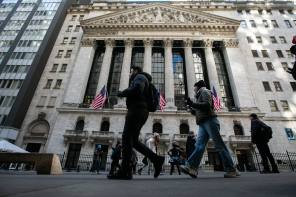

Fund buyers are turning away from US passives in favour of active managers as interest rate uncertainty and other headwinds usher in a “difficult part of the cycle” for the US market.
Passive strategies are a popular way to access this market, which has a reputation as a tough hunting ground for outperformance. Five-year performance figures bear that out: since November 2010, the S&P 500 has returned 97.2 per cent in sterling terms, according to FE Analytics, compared with an 80.6 per cent return for the IA North America sector.
But as the bull market matures and tighter monetary policy draws near, some selectors are turning to active managers. Parmenion has increased active fund holdings within its Conviction product – which allocates to both active and passive portfolios – from 60 per cent to 80 per cent of its total exposure to US equity funds.
Its chief investment officer Simon Brett highlighted uncertainty over the pace of the Federal Reserve’s rate hikes and the risk that wage growth erodes corporates’ already high levels of profit growth.
“These two factors lead us to believe that volatility and dispersion in stock prices is likely to increase over the short term and perhaps persist over the next 12 to 18 months,” he said.
“Our conviction therefore lies in those active managers who have a proven stockpicking ability and are able to continue to deliver attractive risk-adjusted returns through this more difficult part of the cycle.”
Goldman Sachs analysis looking at the smaller end of the market scale suggests this prediction is well founded. The dispersion of returns for US small caps was close to a five-year high as of the start of November, it found.
The view is echoed elsewhere. Mike Deverell, partner and investment manager at Equilibrium, said he had taken a passive approach to US equities “for a long time”, but took advantage of August’s market slump to top up exposure via the JPM US Equity Income fund.
He said: “At this stage in the market cycle we wanted quality companies who can grow their earnings greater than the market, with the safety of a higher dividend yield. The theory being we’re not going to see fantastic market growth but there are some good companies who are geared into the strong US economy.”
Turcan Connell Asset Management has also reduced its passive exposure to the US in recent months. Chief investment officer Haig Bathgate said US equity returns had begun to disperse again and he remains cautious on the market in general.
In the past year he has begun to focus more heavily on active funds such as the Findlay Park American fund, as well as smart beta products, though he is now reducing his overall US weighting on valuations concerns.
Meanwhile, Ryan Hughes, fund manager for Apollo Multi Asset Management, has been taking a sector-specific approach. In April he added the Polar Capital Global Insurance fund on the premise the insurance sector “should benefit from rising interest rates”, and has been adding to this position since then.
However, Mr Hughes warned that plenty of active managers would continue to struggle despite the changing market conditions.
He said: “If we see disruptive events such as a rate rise, you have a fighting chance of outperforming the index. But you need to ensure that you find a manager who is happy to invest differently to the benchmark. With the US being notoriously difficult to outperform, there are a lot of managers who are benchmark-huggers.”



